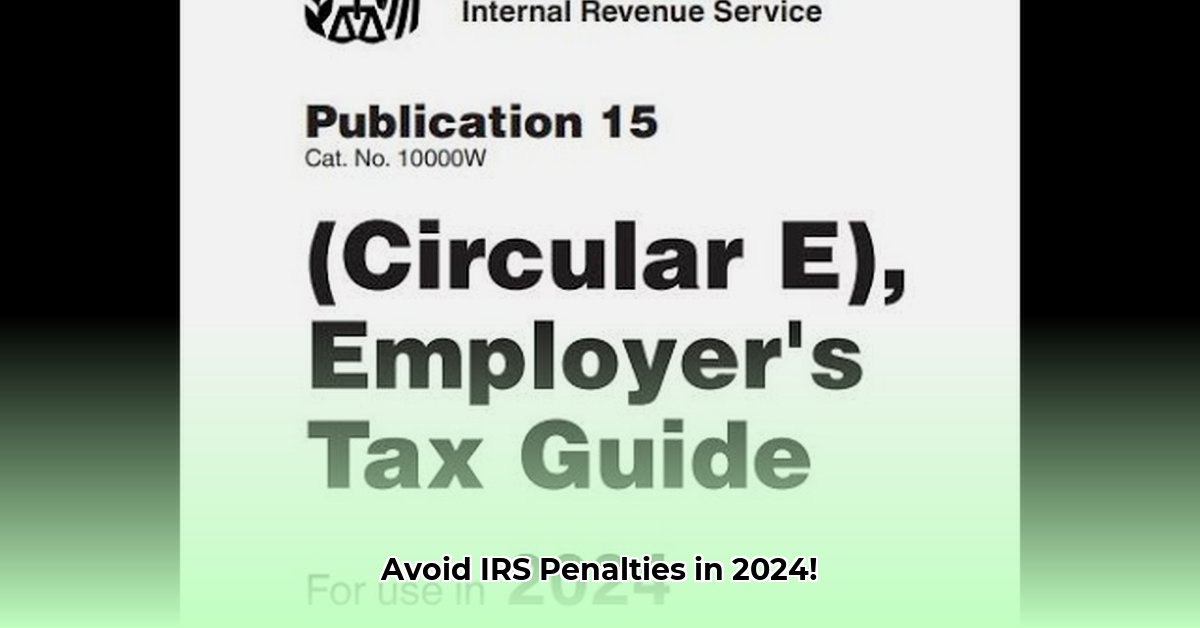
Understanding IRS Publication 15-T: Your Guide to Accurate Tax Withholding
Navigating the complexities of federal income tax withholding can be daunting, but it's crucial for employers to understand and comply with IRS regulations to avoid penalties. This guide simplifies IRS Publication 15-T for 2024, providing a clear, step-by-step process for accurate tax withholding from employee paychecks. We'll demystify the key concepts and methods, empowering you to confidently manage your tax responsibilities. Why is accurate withholding so important? Because it prevents costly penalties, audits, and the stress of IRS compliance issues.
Key Factors Influencing Your Withholding Calculations
Several critical factors influence your tax withholding calculations. Understanding these elements is paramount to accurate withholding and preventing potential IRS penalties. Let's break them down:
- Employee Wages: The foundation of your withholding calculations. Higher wages generally mean higher withholding amounts. Isn't it true that a higher salary usually corresponds to a higher tax burden?
- Marital Status: An employee's marital status (single, married filing jointly, etc.) significantly impacts their tax bracket and the amount withheld. Married couples often benefit from lower tax rates. Did you know that filing status can substantially change the amount withheld?
- Tax Allowances: Claimed on W-4 forms, these allowances reduce the amount of tax withheld and reflect factors like dependents and other tax situations. These allowances directly impact an employee’s net income.
- Additional Withholding: Employees can opt for additional withholding to receive a larger tax refund or cover other tax liabilities.
Choosing the Right Withholding Method: Wage Bracket vs. Percentage Method
Publication 15-T presents two primary methods for calculating withholding:
Wage Bracket Method: This simpler method uses pre-calculated tables (found within Publication 15-T) to determine the withholding amount based on an employee's earnings and status. It's ideal for smaller businesses with fewer employees but might be overly simplified for more complex situations. How many businesses find this method more manageable than the percentage method?
Percentage Method: A more complex method utilizing formulas and calculations. It provides greater accuracy, particularly beneficial for businesses with varying employee incomes and payroll structures. This method requires more mathematical calculation but yields more precise results. What percentage of businesses utilize payroll software to simplify this method?
Many employers utilize payroll software to streamline calculations and minimize errors. However, remember that human oversight remains crucial for accuracy.
A Step-by-Step Guide to Accurate Withholding
This simplified walkthrough, while referencing Publication 15-T for precise details, ensures a straightforward approach:
Gather Employee Data: Collect all necessary information from each employee: wages, filing status, allowances, and any additional withholding requests. How much time is saved with a well-organized data-gathering system?
Choose Your Method: Select either the wage bracket or percentage method based on your business's needs and complexity. The right method improves accuracy and efficiency.
Perform the Calculation: Carefully perform the calculation using Publication 15-T as your reference guide. Employ a calculator and verify your calculations. Double-checking is crucial to avoid errors.
Maintain Thorough Records: Keep detailed and organized records of all calculations for tax purposes. This documentation is vital for audits and future tax compliance. What percentage of successful tax audits involves complete and accurate record-keeping?
Minimizing Tax Risks: Best Practices for Compliance
Failure to comply with Publication 15-T can lead to significant penalties and legal issues. Let's explore some risks and mitigation strategies:
| Risk | Potential Impact | Mitigation Strategies |
|---|---|---|
| Incorrect Withholding | Penalties, audits, interest charges | Utilize reputable payroll software, double-check calculations, seek professional tax advice when needed. |
| Outdated Information | Non-compliance, penalties | Regularly update knowledge on tax laws, consult the latest Publication 15-T. |
| Poor Record Keeping | Audit difficulties | Maintain organized and easily accessible records. |
| Lack of Understanding | Errors, wasted time & money | Invest time in studying Publication 15-T and related resources. |
Proactive compliance is the most effective risk mitigation strategy. The IRS website offers valuable resources.
Conclusion: Mastering Tax Withholding for Success
Utilizing IRS Publication 15-T effectively ensures compliance, minimizes potential risks, and streamlines your payroll processes. This guide provides a foundation; consulting with a tax professional for complex scenarios is always recommended. Remember: accurate tax withholding protects your business and saves you future headaches.